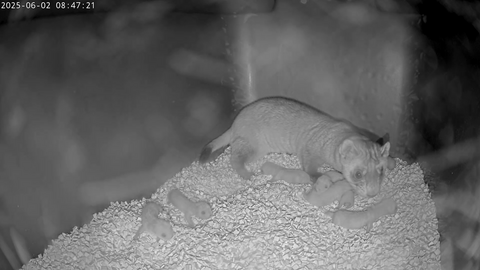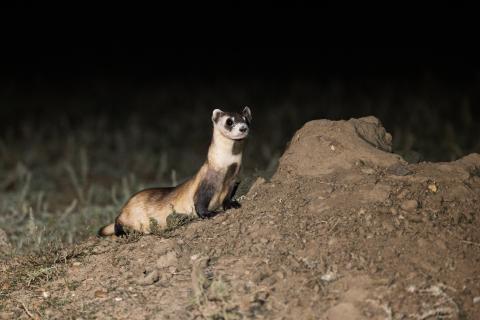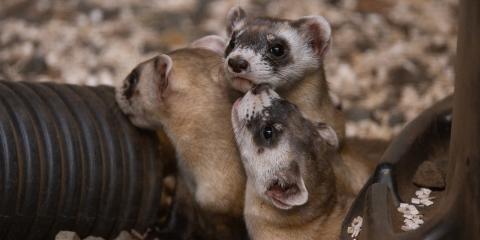Black-footed Ferret Cam
Watch live video of black-footed ferret mother Aristides and her eight kits (born May 28, 2025) in their den at the Smithsonian Conservation Biology Institute in Front Royal, Virginia.
Black-footed ferrets — the only ferret species native to North America — were once extinct in the wild. Thanks to conservation and breeding programs at places like the Smithsonian, their species has made an incredible recovery.
This cam has no sound and appears in black and white because it is dark inside the den.
Note: If you see what appears to be a dead kit on camera, chances are it is a rat. See the FAQ below!
Ferret Cam FAQs
When is the best time to see the kits playing?
Like many babies, black-footed ferrets kits mostly spend the first few weeks of their lives resting. When they grow a little older, they will spend more time playing and exploring.
As a species, black-footed ferrets are nocturnal, so the kits may be more active at night or early in the morning.
Who are the kits' parents?
The mother, also called a dam, is 2-year-old Aristides. Aristides was born June 21, 2022, at the Louisville Zoo in Louisville, Kentucky. This is her second litter. She gave birth to a litter of seven kits last year at the Smithsonian Conservation Biology Institute (SCBI) in Front Royal, Virginia.
The father, also called a sire, is ColeS. He is 2 years old and came to SCBI from the U.S. Fish and Wildlife Service Ferret Conservation Center in Colorado. This is his first surviving litter.
Is that a rat?
Black-footed ferrets eat rats and other small rodents. You may see them enjoy a rat meal on camera! It's easy to confuse the rats with a lame or dead kit. However, all the kits are healthy and growing well.






